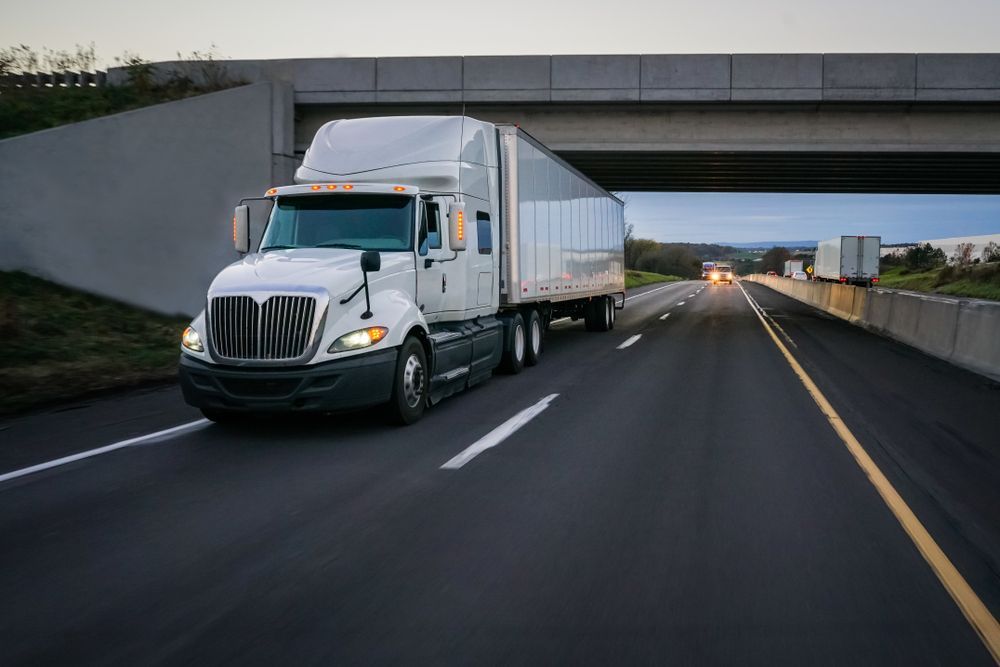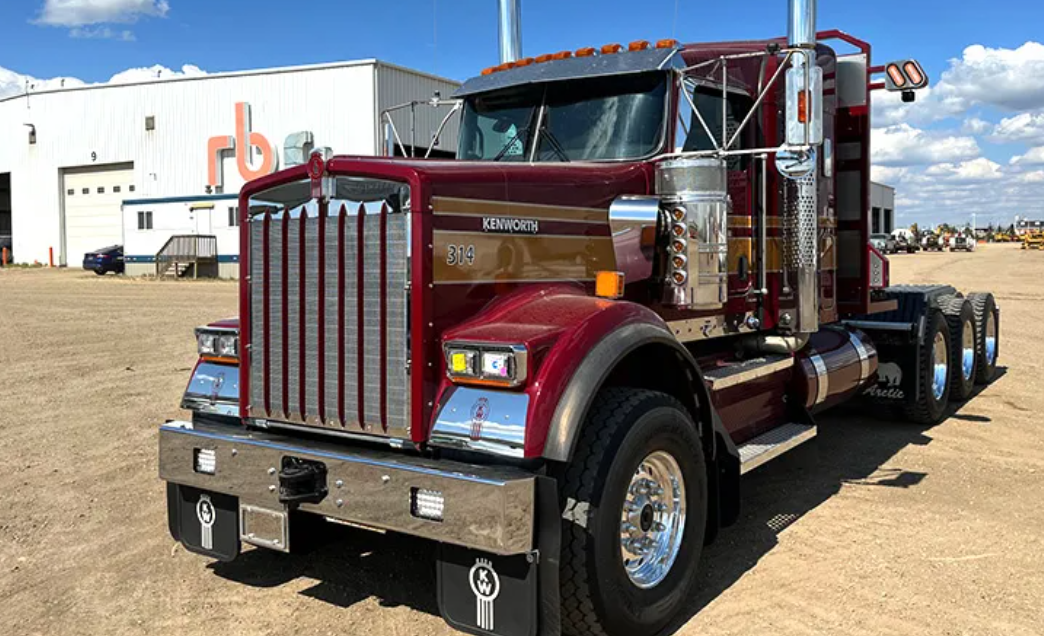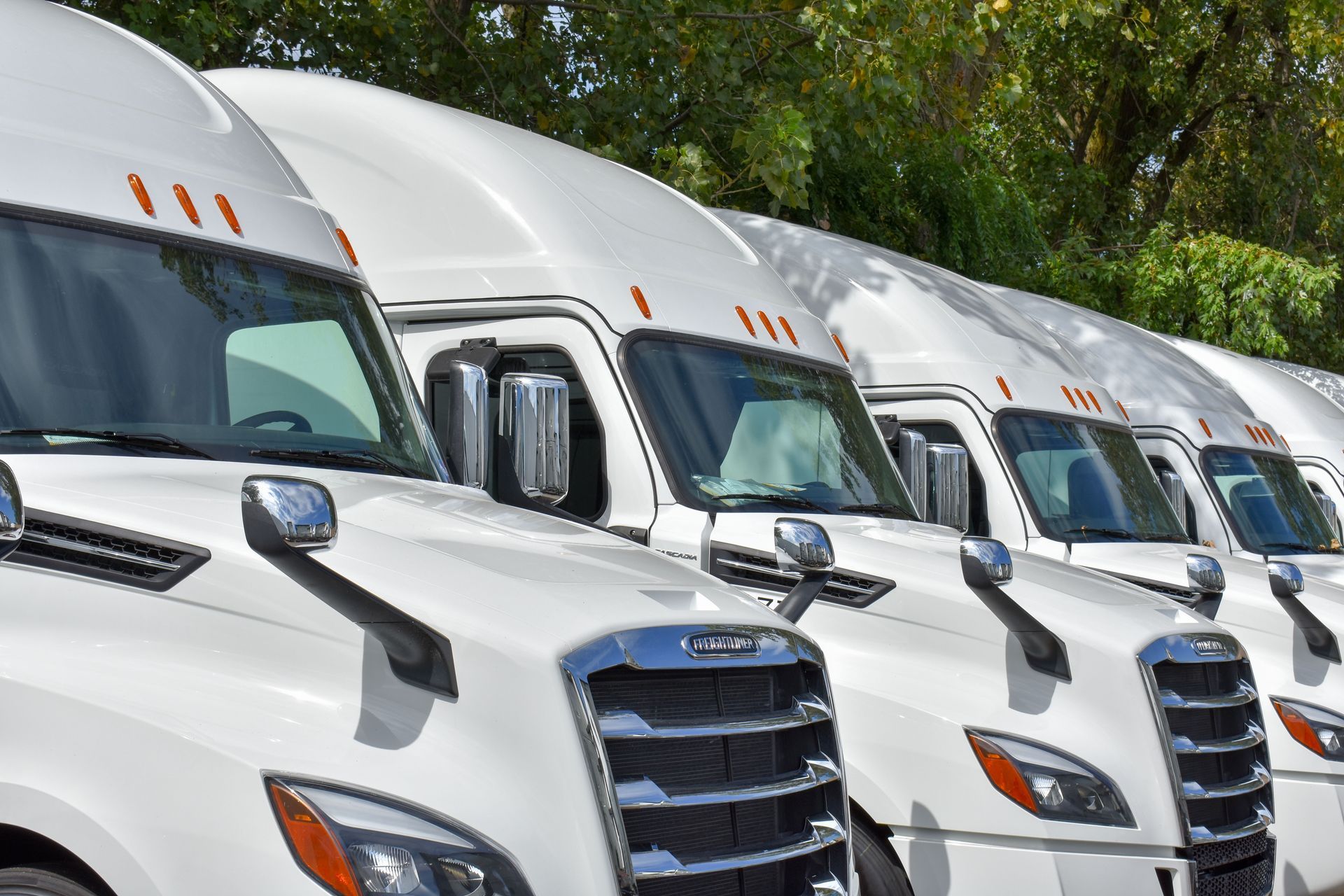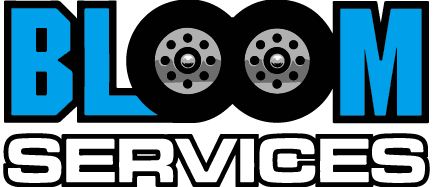WRITTEN BY: BLOOM SERVICES

If you’ve ever dreamt of the freedom and independence that comes with being a Trucking Owner-Operator, then buckle up. In this guide, we’ll navigate the superhighways of the trucking industry and show you how to steer your way toward becoming a successful owner-operator. The freedom of the open road awaits!
What is an Owner-Operator?
A truck owner-operator is primarily a business owner. You own your own semitruck and can accept jobs from any carrier or work directly with a single carrier. You oversee what loads you take, build your own customers, or work with carriers by leasing your truck with them.
An owner-operator is fully responsible for their own trucks, this means the maintenance, insurance, license plates, taxes, and even their own fuel cards. You are like a captain of a ship; you need to steer clear of rough waters and rocky shore. While you have the freedom that comes with being an owner, you also have quite a bit of responsibility.
What Does an Owner-Operator Do?
Being an owner-operator means you’re the boss of the highways. As an owner-operator, you not only drive your truck, but you also own it and run it as a business. You decide when and where to hit the road, what cargo to carry, and how to make the most of every mile. It’s a lifestyle that gives you the freedom to be in charge, but it also comes with the responsibility of managing your truck, finding loads, and staying on top of regulations. It’s a journey of independence and self-reliance that’s not just a job, but a way of life.
Owner-operators will also need to develop clients or maintain a relationship with a carrier, without it, they might sit more often than run. If the wheels are not turning the truck isn’t earning. So, while an owner-operator might have freedom, they also have risks. An owner-operator must be
flexible, responsible, and diligent.
Owner-Operator vs Company Truck Driver
A company truck driver operates a semitruck provided by the company they are employed by. They are typically assigned loads by dispatch and receive compensation on a per-mile basis. Key aspects such as fuel, truck maintenance, and insurance are typically covered by the employing company. This position offers a stable income and a predictable work routine.
Conversely, an owner-operator is essentially an entrepreneur. Owner-operators manage an independent small trucking business, which involves one or more semi-trucks. Owner-operators enjoy the autonomy to select their own freight, either through direct clients or by leasing onto a carrier. Their responsibilities extend beyond driving; they must find suitable loads, handle business expenses, potentially make employment decisions, haul freight, maintain their vehicles, and make revenue and profit decisions. Unlike company drivers, owner-operators are responsible for all truck-related costs, including fuel, maintenance, and insurance.

Company truck drivers receive compensation primarily based on mileage, with potential additional earnings for loading/unloading, detention, or performance-related incentives. In contrast, owner-operators generate revenue by actively selecting freight opportunities and executing freight deliveries, often subject to contract terms. Payment structures for owner-operators can vary, encompassing mileage-based pay or flat rates per load.
Company drivers often choose this career path for its stability, predictable income, and job security. In contrast, individuals opt for the owner-operator route to establish an independent business, realize greater revenue potential, and relish the flexibility and decision-making authority that come with ownership. Depending on your ability and long-term goals, becoming an owner-operator can be rewarding.
Owner Operator Requirements
The main requirement for becoming an owner-operator is owning your own truck. Once you own your own truck, there are several paths to consider. If you want to completely go at it alone without dispatch support or working directly with a carrier, then you will need to apply for a USDOT and MC number.
USDOT and MC Numbers
By getting your own USDOT and MC (Motor Carrier) numbers, you are becoming your own Motor Carrier. A USDOT number is required for any company that operates commercial vehicles that haul interstate commercial cargo. This is an identifying number for the FMCSA, which is used to track and store information like audits, compliance, crash investigations, and more. You are required by FMCSA to obtain a USDOT number if you are going to run under your own authority.
MC number is also needed to run under your own authority. MC numbers provide interstate operating authority, along with a USDOT number. Keep in mind not every owner-operator needs to go through getting an MC or USDOT number if they work with a carrier and lease on under them. They would run under that carrier’s authority, but if you want to create your own MC, it will require a bit of paperwork.
Insurance
As a motor carrier, you will need to have liability insurance to cover damage or injuries caused by your vehicles. The specific type of liability insurance you need will depend on your business and the type of coverage required by law.
In the U.S., the Federal Motor Carrier Safety Administration (FMCSA) requires motor carriers to have minimum levels of liability insurance for certain types of coverage. These include:
Bodily injury liability: This covers damage or injuries to other people that are caused by your vehicles. The FMCSA requires a minimum of $750,000 in coverage for vehicles that transport non-hazardous goods and a minimum of $5 million for vehicles that transport hazardous materials.
Property damage liability: This covers damage to other people’s property that is caused by your vehicles. The FMCSA requires a minimum of $300,000 in coverage for vehicles that transport non-hazardous goods and a minimum of $5 million for vehicles that transport hazardous materials.
In addition to the above coverage, you may also want to consider other types of liability insurance, such as general liability insurance, which covers a wide range of risks including accidents, injuries, and property damage.
IFTA
The International Fuel Tax Agreement (IFTA) is a cooperative arrangement among various U.S. states and select Canadian provinces. Its primary purpose is to streamline the process of reporting and paying fuel taxes for commercial trucking operations that span multiple authorities. This agreement significantly reduces the complexity and administrative burden associated with managing fuel tax obligations when traversing state and provincial borders.
Under IFTA, owner-operators are required to maintain comprehensive records detailing their fuel purchases and the distance they travel within each participating authority. These records serve as the basis for calculating the net tax liability or potential refunds owed to each authority. The key advantage of IFTA lies in its ability to harmonize the diverse fuel tax regulations of individual states and provinces.
Instead of dealing with a multitude of distinct tax rules, IFTA allows operators to file a single quarterly return through their designated base authority, typically where your vehicle is officially registered. Your authority will distribute the tax revenues to all relevant authorities. This simplifies the overall tax payment process and ensures compliance with tax regulations across multiple authorities.
Heavy Vehicle Use Tax
The Heavy Vehicle Use Tax (HVUT) is a federal tax imposed on heavy vehicles operating on public highways in the United States.

This tax is designed to collect revenue that is used for the maintenance, construction, and improvement of the nation’s road infrastructure, which heavy vehicles put significant stress on.
HVUT applies to owner-operators of heavy vehicles, particularly those engaged in long-haul transportation. The tax amount is determined by the weight category of the vehicle and the number of miles it is expected to travel during the taxable period. To fulfill their HVUT obligation, owners must complete IRS Form 2290, which calculates the tax based on the vehicle’s weight and projected mileage. Subsequently, the tax payment is made to the IRS.
Upon payment of HVUT, owner-operators receive a stamped Schedule 1 form or an electronic proof of payment, which serves as evidence of compliance. This documentation is often required when registering or renewing the registration of heavy vehicles, ensuring that they have met their tax obligations in contributing to the upkeep of the nation’s road network.
Tips on How to Become an Owner-Operator
So, how do you decide if becoming a full owner-operator? Are you able to handle all the paperwork, get your own loads, sign multiple contracts, and maintain your truck all on your own? Alternatively, you can also choose to lease on with a carrier, and they will help with all those things and provide you with dispatch services and freight. If you think you can handle all the work that goes into becoming your own MC, be prepared or seek out carriers to contract with and run under their authority. Regardless of which path you take; you will need to consider the following as an owner-operator.
Open a Business/LLC
As with anything, before submitting your application for a USDOT and MC number you will need to get your business in order. In general, having a business registered helps protect your personal assets, and creates a tax entity. Your trucking LLC has the flexibility to be taxed either as a sole proprietorship or as a general partnership. Under this tax structure, your trucking business itself doesn’t directly pay taxes. Instead, the profits generated by the business flow through the LLC, and you, as the owner, are responsible for reporting and paying taxes on those earnings when you file your personal income taxes.
Buying your Semitruck
For you to be an owner-operator you will need a truck, here is a brief list of things you will need to do to buy one. The first thing to consider when purchasing a truck is your budget. This will help you narrow down your options and determine what kind of truck you can afford. Be sure to factor in additional costs such as insurance, maintenance, and fuel expenses.
If you need financing, secure a loan from a reputable lender. Shop around for the best interest rates and terms that fit your budget. Your ability to buy a semitruck boils down to having good credit. If you have bad credit, it will be nearly impossible to finance a truck. Semitrucks are expensive pieces of equipment, brand new trucks cost about $190-200,000 for base models. Even if you do get approved with fair credit, the interest rates will be high. The loan terms for semitrucks are typically anywhere from 12-96 months. Not to mention you will need a hefty down payment for a new truck. Monthly payments for a new semitruck would run about $3700 to $5000 a month depending on interest rates and loan terms and other factors.
Consider a Lease-purchase Option!
One of the most significant barriers to becoming an owner-operator is the prohibitive cost of purchasing a semi-truck. The average cost of a new Class 8 truck is over $200,000, and even used trucks can cost upwards of $70,000. By joining a lease-purchase program, you can avoid the high upfront costs of purchasing a truck and instead make smaller monthly or weekly payments. This can make it easier to get started in the industry and build your business over time.
Bloom Help’s Drivers Become Owner-Operators
At Bloom Services, we offer a lease-purchase program with no money down. For trucks over 100,000 miles, there is no deposit, for trucks under 100,000 miles you may need to put down a deposit of roughly $10,000 for a brand-new truck. We offer Volvo 860s and Freightliner Cascadias.
You can own your own truck in three years, we help get you started by helping you with forming your LLC, getting your truck, and providing dispatch and other administrative things you will need. If becoming an owner-operator is your ultimate goal and dream, we are a good place to achieve it.

We pay 82% gross load, and we pay for the cargo, liability, and trailer rent. You would just pay for your truck, fuel, insurance, and a few other small expenses. Our drivers average well over $120,000 a year and average over $3,000 a week take home.
However, we do have a few requirements:
- We require 2 years of Class A CDL experience.
- You will need to be out for three to four weeks at a time.
- And you will need to go to all 48 states.
If you meet these requirements, we want to hear from you so we can discuss our programs in detail. Contact us today to start your journey toward becoming an Owner-Operator with us.



office & Parking depot
5120 Belmont Rd Unit K, Downers Grove, IL 60515, USA
Hours of operation
Mon - Sun: 7am-5pm
